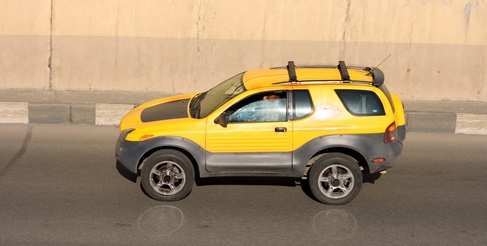
The term "upside down" describes a vehicle that is not worth as much as its loan payoff amount. Depending on how much you owe and your credit rating, you may be able to trade out of your vehicle.
Banks lend on what is known as a loan-to-value ratio. If you have excellent credit, the bank may lend you up to 120 percent of the new car's value. With poor credit, you may obtain an approval of only 60 percent of the vehicle's value. If your value is lower, you have to put money down towards your new loan.
You can always put money down towards your loan to make up for the negative equity of your trade. Or, you can purchase a vehicle with rebates. Rebates are automatic discounts towards a new car purchase. If you can get $3,000 off a new vehicle's MSRP (manufacturer's suggested retail price), you can "hide" that amount of negative equity in your new purchase.
If you have to carry over money but can get a lower interest rate than the one you had on your trade-in vehicle, you might save money. For example, if your loan had a 6 percent interest rate and you carry over $3,000 to a 0 percent loan, you'd be saving money on interest.
Even if the bank will lend you the amount you need and you find rebates that help to cover some of your equity, decide if you really want to trade out of your car. If you are upside down now, it is likely you'll be upside down in the future. Without putting significant money down towards your purchase, you will owe too much on your vehicle to trade in anytime within the next few years.